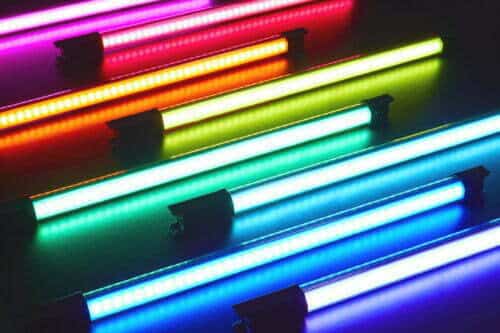LED tube lights are among the most popular lighting solutions available today. They are the practical choice in homes and offices that want to achieve clean-looking indoor lighting in rooms and displays of all sizes.
Lepro LED tube lights are being used in a large number of homes, businesses, and commercial environments as the world abandon older lighting technologies. LED tubes can be installed under or in cabinets, worktops or can be built-in freestanding furniture.
There are several great reasons why everyone is going for LED bulbs, with the most compelling reason being lower running costs.

In this guide, we’ll learn more about LED tube lights and their advantages.
T8 LED Tubes
LED tube bulbs are categorized based on various key designations. The most common way to classify LED tubs is with their size. “T” represents the measurement of a LED tube in diameter, so the higher the T, the higher its diameter.
T8 denotes that the LED tube bulb is exactly an inch or 8/8ths. In standard fluorescent tubes, smaller diameters almost always equal better efficiency; however, this logic doesn’t apply to LED bulbs.
LED Tube Light VS Fluorescent Tube Lights
As users transition from Fluorescent tube lights to LED bulbs, the first thing they want to do is compare these two types of tube lights. The simple answer is that LEDs perform far better than regular fluorescent tube bulbs. They use up less energy and have a longer lifecycle.
In any test, modern LED technology will last far longer than a fluorescent bulb and can illuminate a wider area with lower levels of energy consumption.
Advantages of LED Tube Bulbs
LED Bulbs Consume Less Energy
LED lights need significantly less energy to be bright, unlike other traditional luminaries. In some cases, LED Lights can save up to 80% on energy consumption thanks to their advanced lumen per watt rating. In simple terms, a watt is the energy bulbs need to light up. Fewer watts per bulb saves energy, so less energy is needed therefore reducing our production and pollution of the environment.
LED Lights Have A Longer Lifespan
On average, a LED bulb can last between 40,000 to 50,000 hours of non-stop use. Hence, LED light bulbs can stay on for a whole year. An incandescent bulb, on the other hand, lasts an average of 2,000 hours or three months at most.
As we turn off our lights when they aren’t necessary, we extend the lifespan of these LED bulbs. This means we’d go several years before they need to change a LED bulb. Because LED bulbs produce less heat, their components can last longer.

LED is Greener
LED lights require no toxic elements. Most offices currently use fluorescent lights, which contain noxious chemicals like mercury. At the end of the lifecycle of these bulbs, they are poured into landfills, allowing mercury to pollute the environment.
Watch this space for updates in the Technology category on Running Wolf’s Rant.
Like what you just read? Subscribe To Our Newsletter to stay in the loop.
Feel free to explore our website or check out our Featured Articles.
Looking for a gift for that special person in your life? Check out Netflorist.co.za, South Africa's top online florist and gift service. They offer flowers, gifts, and hampers for all occasions AND reliable nationwide delivery.


